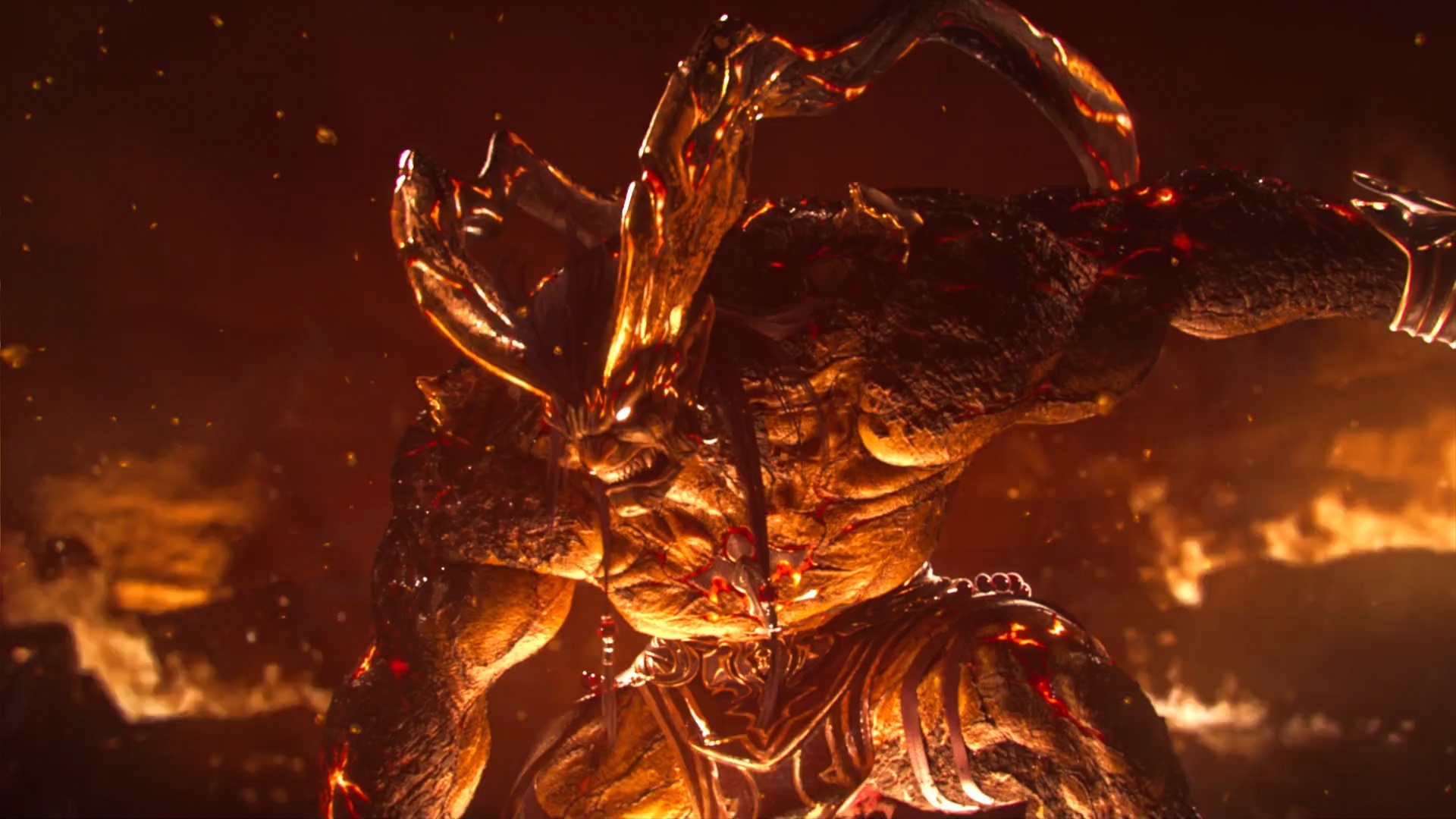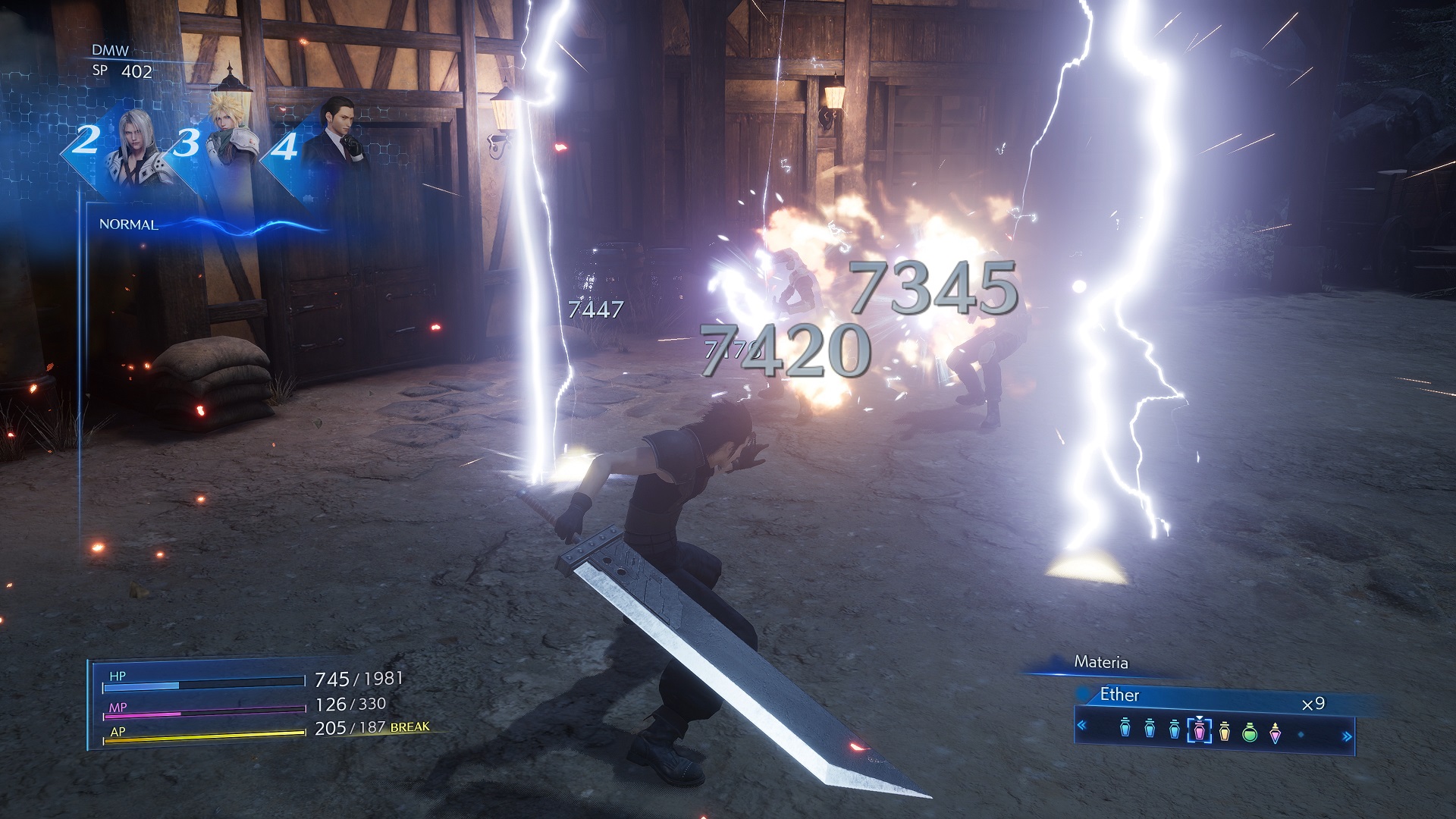I have a secret to tell: I’m not a fan of Cloud Strife, the hero of Final Fantasy VII. There, I said it. He’s too moody, too stoic, and for an RPG, I never really connected with the character. As much as I love the game for what it did for the entire industry, essentially putting Sony’s PlayStation on the map, the lead character has always been a sore point for me. That’s why when Crisis Core: Final Fantasy VII debuted on the Sony PSP, I took to it so well. Zack Fair wasn’t devoid of his own issues, but at least he was likable. That game, which included a new prequel chapter featuring some of the characters from Final Fantasy VII, made the PSP a must-own system for fans and is still regarded today as a watershed moment in the series.
To prove my point, the combat introduced in Crisis Core would later be refined and adopted into the vaunted and amazing Final Fantasy VII Remake, so it only makes sense that Square Enix would go back and remaster the original Crisis Core, now dubbed Crisis Core: Final Fantasy VII Reunion, seeing as players worldwide are patiently waiting on the next chapter of the main FF7 remake, hopefully dropping sometime in 2023.
Crisis Core: Final Fantasy VII Reunion is not a full-fledged remake like its amazing cousin. Instead, it’s a remaster of the original game, with a few notable additions like new cutscenes, redesigned character models, and full voice acting. The core game is pretty much intact as best I can remember, and it’s a treat going back and playing through this story on a large screen.

Speaking of which — the story centers around Zack Fair, a member of SOLDIER who hopes to advance up the ranks to 1st Class, like his idol, Sephiroth. Zack is cocky to a fault, but he’s also very loyal, so when his mentor Angeal seemingly sides with an AWOL soldier named Genesis and leaves Shinra, it sets off a series of events that takes Zack to many familiar locations and faces, all on his quest to find the truth about Angeal and the experiments of Dr. Hojo — the same experiments that are still ongoing when players enter the world of Midgar in Final Fantasy VII.
As mentioned, Reunion offers up a different style of combat, more in line with hack-n-slash action games than a traditional JRPG. Fifteen years ago, it might have been considered heresy to switch up combat in a game bearing the Final Fantasy label, but in 2022, the fast-paced swordplay and spell casting in real time is old hat — especially coming off Final Fantasy VII Remake. Zack zips around the battlefield slashing enemies with a quick tap of a button, with spells, assorted potions, and other items just a button press or two away.
In addition, the DMW, or Digital Mind Wave — a slot machine-like mechanic that constantly spins in the upper left-hand corner of the screen, paid for with SOLDIER points (or SP) while in battle — allows Zack to use special skills, receive certain buffs, and even call on massive summons, as long as the three slots line up with the correct faces. The DMW runs on its own, with the player monitoring the results all the while attacking, blocking, and dodging enemies in a skirmish. If three same Eikon heads appear, Zack can call in a summons spell, and rest assured, the full-motion video of the assault can be skipped — thankfully. I mean, I love watching Ifrit rage as much as the next guy, but after the 50th or 60th time, it begins to get old.

The DMW also features the faces of characters that Zack meets in his journey, and building relationships with these characters strengthen their effects when they hit. Aerith can heal and offer status clears, Angeal and Sephiroth offer devastating offensive moves, and various members of the Turks offer a little of both. Finding and stocking the DMV with characters is one of the many ‘side quests’ in Reunion, and each new character makes Zack’s mission easier.
Zack’s journey would not be complete without side missions, which come in the form of short VR simulations that can be accessed from any save point. These missions offer rewards like items and materia, and even summons materia, so they are worth completing. They also present chances for Zack to level up, as his growth is tied to the randomness of the DMW — certain conditions have to be met for him to level up. It’s an odd choice to map the missions to save points, as Zack can literally stop his story before a tough boss battle and dip into several short missions to collect much-needed items or to get stronger. I often wait until I’m back at a base and then burn through a bunch of missions all at once, but the option is there to do it during a chapter.
Crisis Core: Final Fantasy VII Reunion features full voice acting, using the same cast as Final Fantasy VII Remake, including Tyler Hoechlin (Superman & Lois) as Sephiroth and Briana White as Aerith, among others. Unfortunately, the voice actor for Zack Fair sounds a little too much like an amalgam of Sonic the Hedgehog actors from both the games and feature films, and I’m constantly reminded of this whenever he speaks or tries to emote. It detracts a bit from the game, and the actor behind the voice, Caleb Pierce, will reprise the role in Final Fantasy VII – Rebirth, so I guess it’s just something I will have to get used to. As much as I liked Zack’s character 15 years ago, with this new voice, it’s just not the same. Again, this is a personal observation, coming from someone who is still playing Sonic Frontiers on a regular basis.

The remastered graphics and new score really help elevate Reunion to the level set by Final Fantasy VII Remake. Having played this game both on the PSP and again on the PS Vita, seeing the action blown up on a big 4K display is absolutely lovely. In fact, if there was one thing I could say to entice a person to give Reunion a go, it’s how gorgeous the visuals are. Some of the FMV cutscenes are taken directly from the original game (don’t worry, you’ll be able to tell), but for the most part, developers Square Enix and Tose have done a stellar job updating the visuals and marrying them to the new Final Fantasy VII Remake chapters for a seamless experience. If anything, playing through Reunion should serve as a precursor to what’s coming in the next two chapters of Remake.
Crisis Core: Final Fantasy VII Reunion is not a full-on remake, but this HD remaster still holds its own against its more powerful cousin. Playing through Zack Fair’s story again has rekindled many of the decades-old feelings from when I first gave this title a go on the PSP, and this remaster presents the definitive version of Zack’s story in ways no one could have predicted 15 years ago. It’s a must-play for fans of the Final Fantasy VII narrative, both the old version and the new, and if you’ve wanted to jump into this massive, often complicated story but have been afraid of being lost, Crisis Core: Final Fantasy VII Reunion is a great starting point. I envy any newbies just starting out, as this is one story you will not soon forget.
This review is based on the PlayStation 5 version of the game. A copy was provided to us by Square Enix.
Great
Crisis Core: Final Fantasy VII Reunion is a wonderful remaster of the first part of the Final Fantasy VII story, and the move from handheld to the TV screen, along with new graphics and voice acting, makes this a solid starting point for fans who may have never had the pleasure of meeting these iconic characters.
Crisis Core: Final Fantasy VII Reunion
